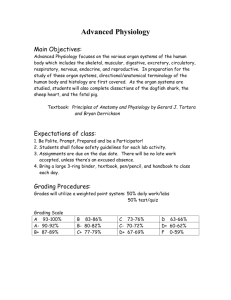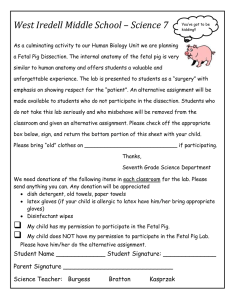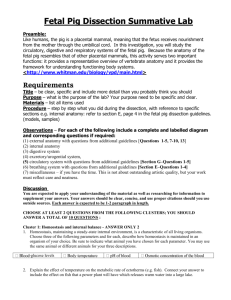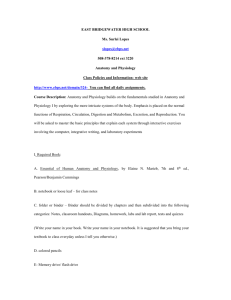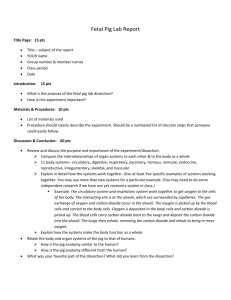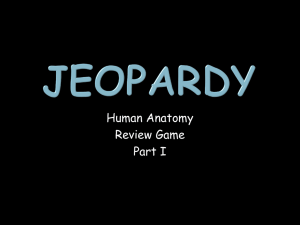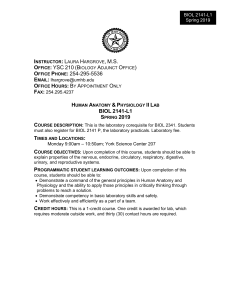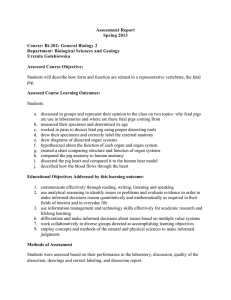Unit 4 Unit in Review - Hutchison
advertisement
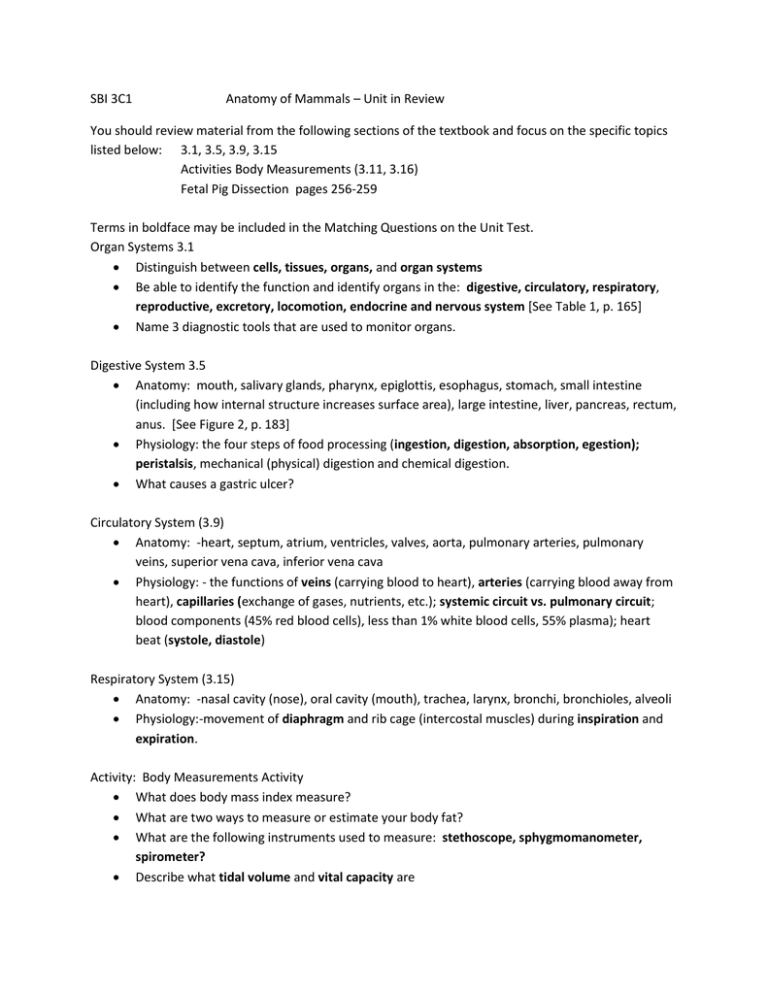
SBI 3C1 Anatomy of Mammals – Unit in Review You should review material from the following sections of the textbook and focus on the specific topics listed below: 3.1, 3.5, 3.9, 3.15 Activities Body Measurements (3.11, 3.16) Fetal Pig Dissection pages 256-259 Terms in boldface may be included in the Matching Questions on the Unit Test. Organ Systems 3.1 Distinguish between cells, tissues, organs, and organ systems Be able to identify the function and identify organs in the: digestive, circulatory, respiratory, reproductive, excretory, locomotion, endocrine and nervous system [See Table 1, p. 165] Name 3 diagnostic tools that are used to monitor organs. Digestive System 3.5 Anatomy: mouth, salivary glands, pharynx, epiglottis, esophagus, stomach, small intestine (including how internal structure increases surface area), large intestine, liver, pancreas, rectum, anus. [See Figure 2, p. 183] Physiology: the four steps of food processing (ingestion, digestion, absorption, egestion); peristalsis, mechanical (physical) digestion and chemical digestion. What causes a gastric ulcer? Circulatory System (3.9) Anatomy: -heart, septum, atrium, ventricles, valves, aorta, pulmonary arteries, pulmonary veins, superior vena cava, inferior vena cava Physiology: - the functions of veins (carrying blood to heart), arteries (carrying blood away from heart), capillaries (exchange of gases, nutrients, etc.); systemic circuit vs. pulmonary circuit; blood components (45% red blood cells), less than 1% white blood cells, 55% plasma); heart beat (systole, diastole) Respiratory System (3.15) Anatomy: -nasal cavity (nose), oral cavity (mouth), trachea, larynx, bronchi, bronchioles, alveoli Physiology:-movement of diaphragm and rib cage (intercostal muscles) during inspiration and expiration. Activity: Body Measurements Activity What does body mass index measure? What are two ways to measure or estimate your body fat? What are the following instruments used to measure: stethoscope, sphygmomanometer, spirometer? Describe what tidal volume and vital capacity are Activity: Fetal Pig Dissection Be able to label diagrams of the external features, mouth, abdominal cavity, kidneys, thoracic (chest) cavity of the fetal pig Questions #3d, 8g,h, 19k, 28n, 31q (pages 256-259) « after the dissection » questions on sheet Review questions Unit 3 Review (pages 262-265) Suggested questions #1,3,4,5,13,14,22,23,24,26,27,38,43 Labelled diagrams of circulatory system, respiratory system, digestive system, fetal pig

